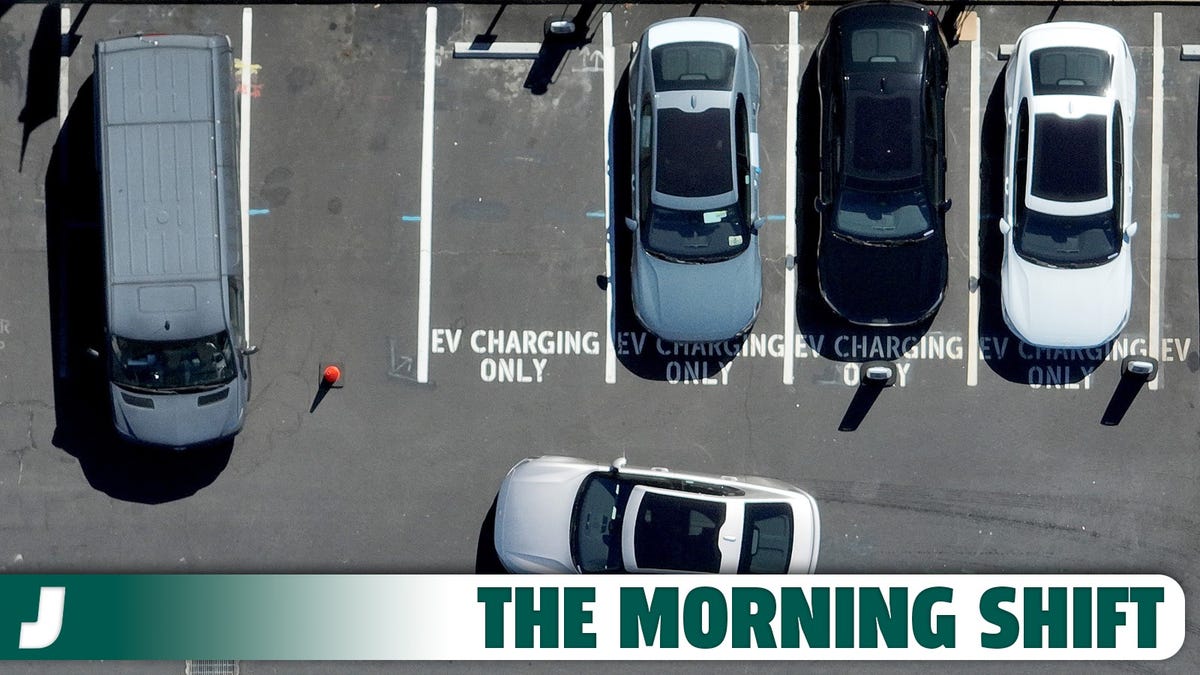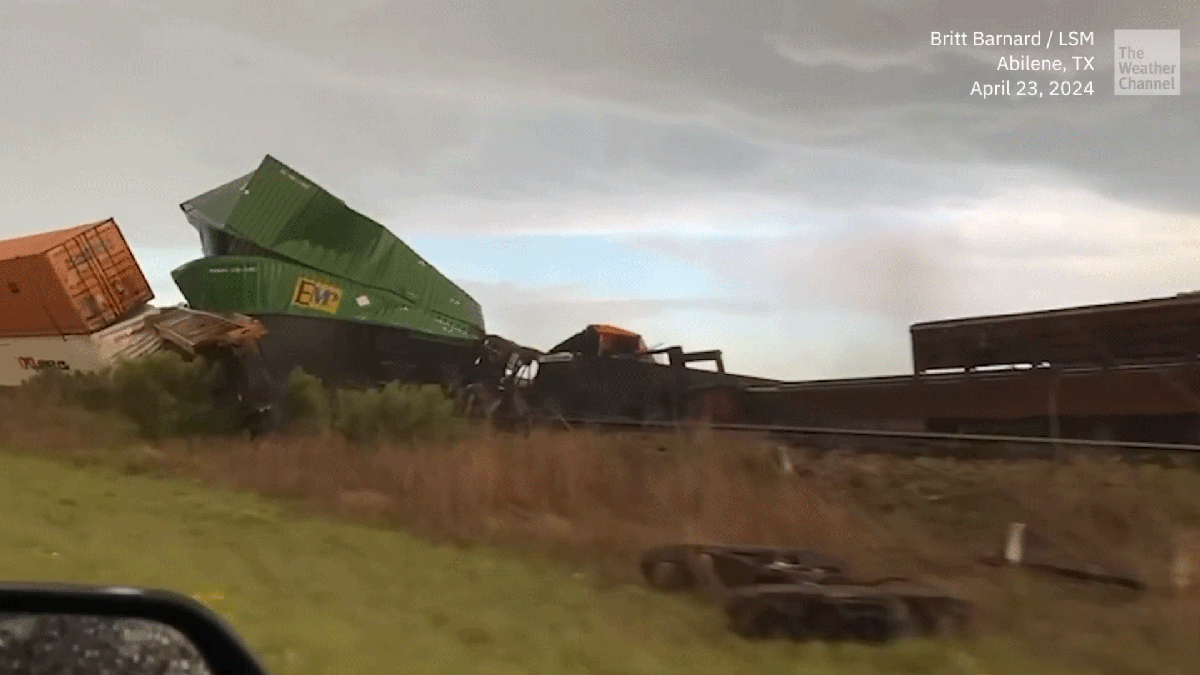Good morning! It’s Monday, March 18, 2024, and this is The Morning Shift, your daily roundup of the top automotive headlines from around the world, in one place. Here are the important stories you need to know.
1st Gear: We Need To Sell Way More EVs
Slowly but surely, electric cars are filling our streets and highways as more and more people make the switch to battery power. In fact, January alone saw a 15 percent increase in electric vehicle sales in the U.S., but that’s not quite enough to meet president Joe Biden’s ambitious emissions targets.
In fact, a new report from Bloomberg suggests that EVs will need to rise to make up more than two-thirds of all cars on America’s roads by 2032 if we’re to meet Biden’s proposed targets. Currently, electric cars make up less than 10 percent of vehicles on America’s roads. As Bloomberg explains:
The measure, which sets limits on smog-forming pollution, soot and carbon dioxide emissions, is seen as one of the most consequential climate regulations being imposed by President Joe Biden. It’s also key to helping the US fulfill its Paris Agreement commitment to at least halve the country’s greenhouse gas emissions by 2030. The transportation sector is the biggest source of planet-warming pollution in the US today.
“Cars and light trucks on their own are roughly 20% of the carbon footprint,” said Manish Bapna, head of the Natural Resources Defense Action Fund. Cutting that is “absolutely essential to real, concrete progress.”
Yet the regulation requires a delicate balancing act for Biden, who is courting voters in the swing state of Michigan, including autoworkers uneasy about a too-rapid transition to electric vehicles.
The measures, which are set to be finalized this week, aim to cut 1.5 billion metric tons of carbon dioxide in emissions between 2026 and 2040. To do this, the Environmental Protection Agency would require year-over-year emission reductions, reports Bloomberg.
2nd Gear: VinFast Is Launching A Charging Network
Charging networks are all the rage these days, Tesla has one that almost every automaker wants a piece of; automakers such as BMW, GM and Honda previously outlined plans to develop their own network; and now, VinFast wants in on the EV charging action.
After launching its first electric models in 2021, Vietnamese car maker VinFast is now preparing to roll out its own electric charging network, reports Reuters. The charging network, which would be called V-Green, will prioritize VinFast vehicles globally. Reuters reports:
V-Green, of which billionaire Pham Nhat Vuong holds a 90% stake, will operate as a global partner, spearheading the creation of a comprehensive charging network, he said a statement.
“V-Green will directly search for land and partners to establish and expand its charging network in key markets of VinFast,” Vuong said.
VinFast, which was founded by Vuong in 2017 and debuted on the Nasdaq last year, has said it would expand to at least 50 countries in 2024.
To develop the network of high-speed EV chargers, VinFast founder Vuong will plow more than $400 million into the endeavor. Over the next two years, the project will see V-Green install new outlets and upgrade other charging sites across countries including Vietnam.
The network will initially focus on charging VinFast vehicles, however Reuters reports that after five years it may expand to other manufacturers as well.
3rd Gear: Solution To Pollution Was There All Along
Very clever people are always shouting about uncovering some new way to clear up the air in our cities. Whether it’s a switch to zero-emission vehicles, carbon capture tech or simply planting more trees, there’s always some new scheme to hear about. But now, a new study has found that the solution to our city center pollution has actually been out there all along.
According to a new report from Forbes, city leaders around the world already know the best ways to cut carbon emissions from urban transport. As the site explains:
The study by the Clean Cities campaign found that if such solutions were implemented then carbon emissions from urban transport can be reduced by the 90% in European cities by the 2030s.
They include expanding cycling infrastructure, introducing low or zero-emission zones, and greening the public transport network.
The report modeled four different scenarios across the cities of Brussels, Madrid, Greater Manchester, Milan, and Warsaw.
All the scenarios lead to significant greenhouse gas reductions from urban transport by 2030, ranging from 55% to 94%.
The report concluded that it could be “highly possible” for many cities to reach “close to zero” emissions from urban transport by the year 2030. To do this, cities would need to encourage a switch to electric vehicles, incentivize people to use public transport as much as possible and change the way we design cities to reduce the need for unnecessary travel.
4th Gear: Amazon’s Zoox Taxis Are Allowed Out At Night
Autonomous vehicles are having a bit of a nightmare in California, where they’re blocking up highways, hitting pedestrians and getting torched by locals that have had enough. Now, all that pent up anger against AVs could be coming to Nevada, as Amazon has just been cleared to expand its Zoox self-driving taxi service.
From this month, Amazon’s Zoox taxis will be able to drive at higher speeds, run farther into the city of Las Vegas and operate at higher speeds, reports Reuters. The cars that will operate in Vegas have been built and designed by Zoox and feature no controls inside the cabin. As Reuters explains:
Zoox said it will free up its specially designed vehicles to drive at speeds up to 45 miles per hour (72 kph), from 35 mph. It also expanded the Las Vegas area in which the cars can travel to five miles from one mile, it said in a statement. “Driving in these larger areas exposes our robotaxis to the busiest conditions they’ve ever encountered,” the company said.
The Zoox vehicles will also drive in light rain and at night, the company said, critical for gathering additional data.
The expansion of Zoox’s service in Vegas follows a move across the boarded in California that permitted some self-driving cars to operate on highways and at much higher speeds.







/cdn.vox-cdn.com/uploads/chorus_asset/file/25249712/246961_Costa_Rica_Renewables_2_IVargas.jpg)